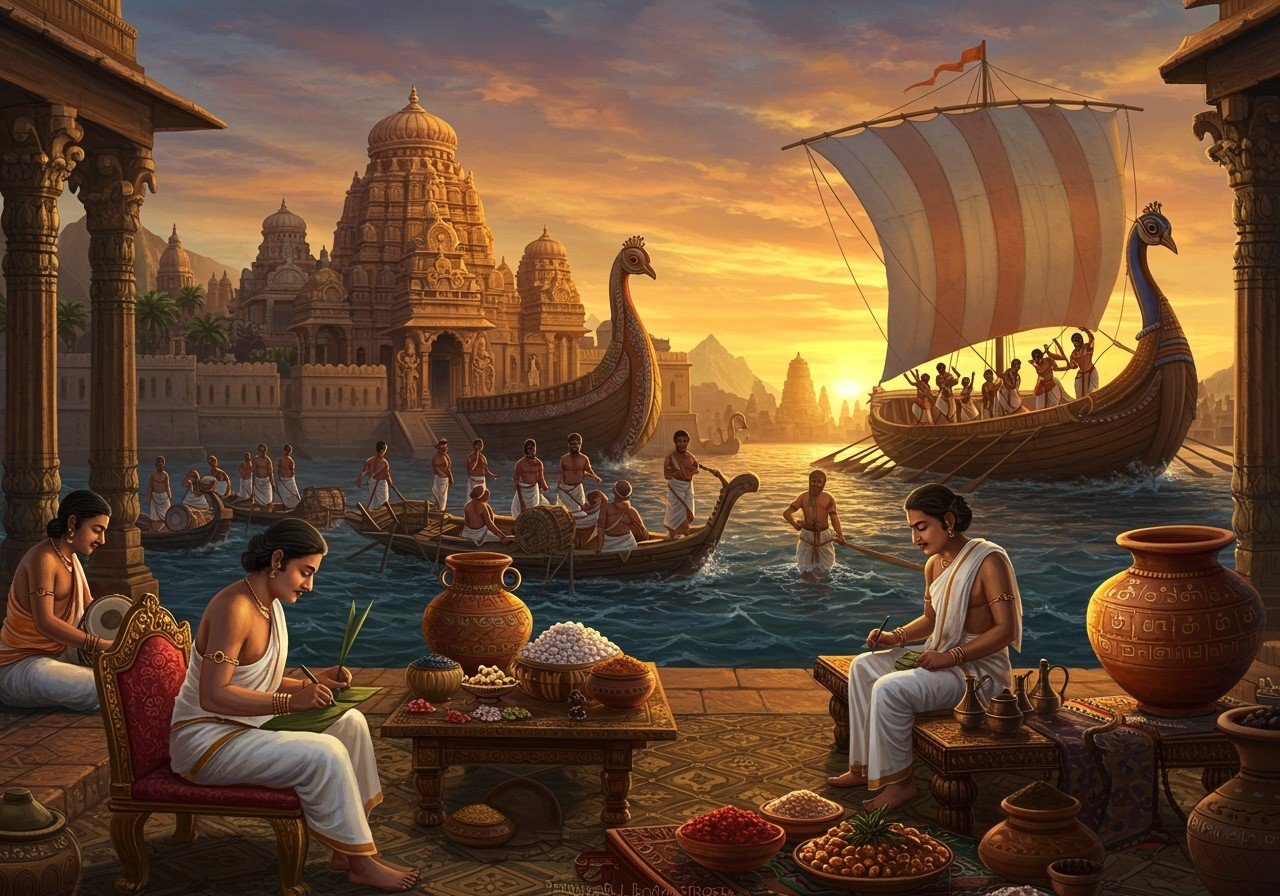
The Sangam Period, a remarkable era in South Indian history, spanning from roughly the 3rd century BCE to the 3rd century CE, left an enduring legacy of literature, culture, and tradition. This period, named after the renowned Sangam academies of poets and scholars patronized by the Pandya kings of Madurai, offers a captivating glimpse into the rich tapestry of ancient Tamil Nadu and its surrounding regions, including Kerala, parts of Andhra Pradesh, and Karnataka.
Understanding the Sangam Age
The term “Sangam” refers to the assemblies of learned poets and scholars who flourished under royal patronage. These academies became centers of literary creativity, producing a wealth of classical Tamil literature that continues to inspire and influence even today. The Sangam literature offers invaluable insights into the socio-political, economic, and cultural fabric of ancient Tamil society.
The Political Landscape
The Sangam Period witnessed the rise and reign of three prominent dynasties: the Cholas, the Cheras, and the Pandyas. These kingdoms played a significant role in shaping the political and cultural landscape of the region. Notable figures like Cheran Senguttuvan of the Chera dynasty and Gajabahu II of Sri Lanka, contemporaries according to the debated chronology of Sangam literature, further enrich the historical narrative of this era.
Social Structure and Daily Life
Sangam literature vividly portrays the social structure and daily life of the people. Agriculture, trade, and commerce formed the backbone of the economy. Religious practices revolved around the worship of deities like Murugan and Shiva. The literature also reveals nuanced gender dynamics and the diverse roles played by different classes within society. This era provides a unique window into the lives and beliefs of people who lived centuries ago.
Key Events and Highlights
Establishment of Tamil Sangams
Three Sangams are traditionally associated with this period:
- First Sangam (Madurai): Though shrouded in legend, the First Sangam is believed to have laid the foundation for the literary traditions of the era.
- Second Sangam (Kapadapuram): The Second Sangam continued the literary activities, further enriching the corpus of classical Tamil works.
- Third Sangam (Madurai): The Third Sangam, located back in Madurai, is credited with preserving and transmitting many of the literary masterpieces we have today.
Major Literary Works
The Sangam Period produced a treasure trove of literary works. Some of the most celebrated include:
- Thirukkural by Thiruvalluvar: This timeless classic delves into ethics, morality, and the art of living.
- Silappatikaram by Ilango Adigal: An epic poem narrating a tragic love story, offering insights into societal norms and values.
- Manimekalai by Sathanar: A Buddhist epic that explores themes of renunciation, dharma, and spiritual enlightenment.
The Significance of the Sangam Period
The Sangam Period holds immense significance for Tamil culture and history:
- Enduring Literary Legacy: Sangam literature profoundly influenced subsequent Tamil literary traditions, shaping the language, grammar, and vocabulary.
- Social and Political Ideals: The literature reflects the social and political ideals of the time, providing insights into concepts of justice, valor, and love.
- Influence on Art and Architecture: The Sangam era also left its mark on art and architecture, particularly in temple construction and design.
- Preservation of Historical Knowledge: Sangam literature serves as a valuable repository of historical knowledge, offering glimpses into the lives, beliefs, and customs of ancient Tamil society.
Poojn.in: Connecting You to the Sangam Legacy
At Poojn.in, we understand the deep-rooted significance of the Sangam period and its influence on Hindu traditions. Explore our collection of sacred items that resonate with the spirit of this era:
- Saraswati Puja Dashakarma Kit: Conduct traditional Saraswati Puja with authentic items, celebrating the goddess of knowledge and wisdom, reminiscent of the Sangam emphasis on learning and scholarship.
- Shiva Lingam and Nandi Set: Honor Lord Shiva, a central deity in Sangam religious practices, with this beautifully crafted set.
- Cotton Wicks for Diya: Illuminate your home with traditional oil lamps, symbolizing the light of knowledge and spirituality that characterized the Sangam period.
Poojn.in offers a wide range of products that connect you with the rich cultural heritage of the Sangam Period. Experience the legacy through authentic puja items, sacred texts, and ritual essentials. Explore our collection and bring the spirit of ancient South India into your home.
Explore more about Hindu traditions and cultural heritage on our blog:


